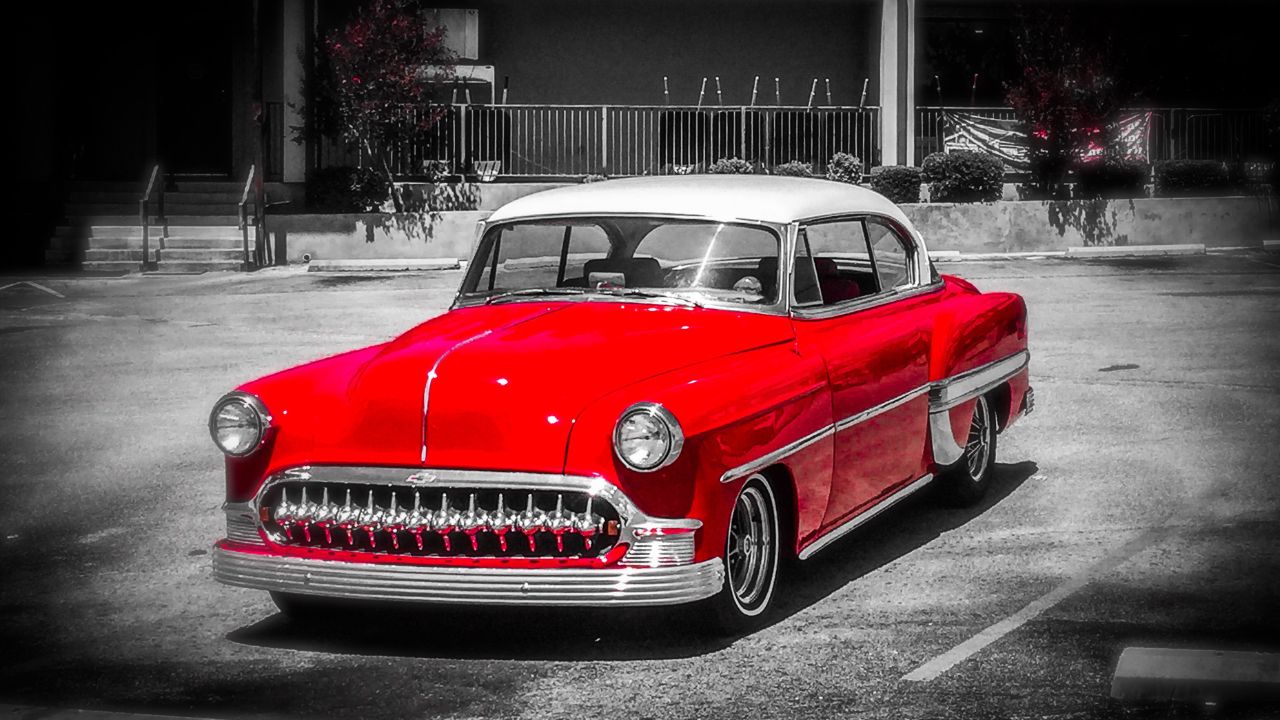
Many retro cars are available for those who still love the look of classic cars. Start with the Ford Mustang and Honda S660. Mini Coopers and Chevrolet SS are two other popular cars for retro enthusiasts. Let's look at some of these cars and see which one suits you best. These cars are definitely not your everyday vehicles. They're status symbols so they're the ideal choice for every driver.
Ford Mustang
The popularity of retro cars is increasing among younger buyers, so Ford has launched a new Mustang model to appeal to this younger market. Although the average buyer is 51 years of age, the new model is aimed at a younger demographic to make it stand out from other retro cars. The car has many retro elements, including a shark-like nose, three-element taillamps, radial chromed air vents, and a retro-inspired three-spoke steering wheel.

Honda S660
The Honda S660 Retro Car is a modern, retro vehicle with a classic design. It also comes at a great price. The Honda S660 is a rear-wheel-drive car with a mid-mounted motor. The S660 will retail for around 2 million yen, which is less than $16,500 in the United States. It will be competitive with front-wheel-drive cars like the Daihatsu Copen. The S660 is available in two engine types, the standard engine and the turbo. This turbo-turbo engine has a DOHC three-cylinder engine and produces 64 horsepower. It can also rev up to 7,700rpm. It comes with a 6-speed manual transmission and a CVT to simulate gear changes. The Honda S660 will sell for $16,500 in Japan but it is not being sold outside Japan.
Mini Cooper
The Mini Cooper is one of the most iconic classic cars in the world, and the modern version still sells in great numbers. The original Mini Cooper is still a popular choice for classic car enthusiasts. The 2015 Mini Cooper is not the only Mini Cooper that has been modified. Despite modern touches, the iconic 1960s design has been preserved by this classic car. Let's take an in-depth look at this retro modern car.
Chevrolet SS
The Chevrolet SS is a mix of old-school and contemporary, but not quite traditional. Its big, soft body is tuned to look like a Detroit automobile, and it has many modern features. Its standard features include heated leather seats, xenon headlights, keyless entry and ignition, a Bluetooth-enabled infotainment system, Bose audio, and factory navigation. Other features include automatic parallel park, lane departure warns, blind spot monitoring and Bluetooth-enabled infotainment system. The SS includes a full size spare tire, Chevrolet's MyLink, dual-zone climate control, an automatic transmission, and a mode selection.
Nissan Micra
The Nissan Micra was released in 1997. It was one among the most successful cars that year. In 1998, the car was given a facelift and continued to be manufactured from then until 2003. The Nissan badge is prominently displayed on the car's exterior, featuring a chromed extended V motif. Its bumper and headlamps were replaced with LEDs. New seats were also installed, along with a new centre console and air vents.

Citroen Alpine A110
Citroen Alpine A110 is an iconic retro car that has a distinct look. The A110 boasts a high roof and an 1130mm clearance. Its interior is compact, with enough room for two small adults or kids to sit comfortably. The steel backbone suspension has coil springs at the front and front wishbones. The A110 is small and responsive, even at low speeds. It has firm brakes and a well-balanced steering wheel. The exhaust notes are very fruity, giving the car a sense of energy and vitality.
FAQ
How can I prepare for a apprenticeship as a mechanic?
It is important that you understand the ramifications of your actions. It is important to know the basics of how cars work. This will make it easy to find the right place to start your first day in the garage.
You should also know how to fix common problems such as tires or broken lights.
This will teach you how to diagnose problems and fix them yourself.
You'll also need to know how different parts fit together to put them back together again.
Finally, you need to be able to safely and efficiently use tools.
All these things will help you to become a competent mechanic.
What is the length of an apprenticeship as an automotive mechanic?
The apprenticeship to become an automotive mechanic takes about three years. This includes two years in school and two as an apprentice. The first year is dedicated to learning the theory and practical skills of the trade. You'll also learn how tools can be used safely and efficiently during this year. After you have completed the first year of training, you will be able to spend an additional year on-the job learning different trades. These periods will also give you the chance to take formal courses.
The final year is dedicated to earning certifications and qualifications in the field. These include NVQs, which are obtained after passing industry-specific exams. Additionally, HNCs are Higher National Certificates that cover general subjects such management, customer service, and business administration. For those interested in pursuing certain trades, City & Guilds certificates are available.
What are the qualifications for an automotive technician
You must have completed high school or GED with good grades in maths and English. Additionally, you will need to be proficient in reading and writing. To be allowed to work, you must pass a written and practical test.
Statistics
- There were 749,900 jobs available for automotive service technicians and mechanics in 2016, which is expected to grow by six percent through 2026. (jobhero.com)
- The U.S. Bureau of Labor Statistics (BLS) reports that the job outlook for automotive service technicians and mechanics is expected to decline by 4% from 2019 to 2029. (indeed.com)
- According to the BLS, total auto technician employment is expected to exceed 705,000 by 2030. (uti.edu)
External Links
How To
How to be an Automotive Technician
An automotive technician provides repair services and maintenance to vehicles. He/she works at car dealerships, auto shops, garages, service centers, etc. He/she works with customers to repair their cars and trucks, ATVs or snowmobiles. A technician in automotive must be able diagnose and repair problems quickly, safely, accurately, efficiently, and effectively.
If you want to be an automotive technician, you need an associate degree from vocational school. After completing this program, he/she will need to pass the National Institute for Automotive Service Excellence's (ASE) certification exam. ASE stands for American Society of Mechanical Engineers. There are two sections to the ASE certification test. One section tests mechanical knowledge; the second section tests practical skills. You will need to attend an authorized testing site in order to pass the test. These locations can be found online, or by contacting your local car dealer.
Before becoming an automotive technician, a candidate must pass the test. This process varies depending on where the applicant lives. For example, some states require candidates to attend a training course, while others allow them to study independently. Some states issue licenses to technicians as soon as they get their license. Others wait until they have worked at least six months as an automotive technician.
An applicant should apply to a local auto shop in order to start their career as an automotive technician. New employees are usually apprentices when they first get hired. Apprenticeships typically last three years. This is when a student can learn how to do basic repairs such as changing oil, adjusting brakes and replacing tires. Some students learn how to do advanced repairs, such as installing air filters, replacing shocks, repairing engines, and replacing transmission fluids. Schools offer classes during business hours. Some schools offer evening classes, however.
Once a student completes his/her apprenticeship, he/she becomes a journeyman. Journeymen spend typically four to five years learning to install major systems such as transmissions and differentials, steering gear, suspensions and drive shafts. You will also learn how to repair complicated electrical components, as well as how to remanufacture engines and rebuild transmissions. Because they have the experience and knowledge to do the job right, employers love hiring journeymen.
After passing the exams, candidates may be eligible to open their own shop if they pass all requirements. According to Bureau of Labor Statistics, there were almost 1.7 million available jobs in the automotive mechanic field in 2010. This number was expected increase 18% between 2009 - 2020. When a candidate plans to open his/her own shop he/she should be ready to invest thousands of dollars in equipment.
There are many factors that affect the salary of an automotive technician, such as where they live, their education and experience. On average, an unemployed person could earn $20,000 annually. A person with only a high-school diploma could make around $21,000 annually. Earnings for those with an associate's diploma are approximately $24,000/year. Technicians with a bachelor's degree earn about $27,000 per annum. Master's degree holders make around $32,000 annually. Salary increases are common so professionals who make less than $30,000 a year could realistically expect to earn $40,000 over the next few years.